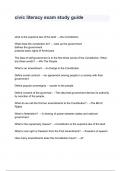Exam (elaborations)
A-Level Contract Law (Paper 3A)
- Institution
- AQA
Everything you need to know for Contract Law. These notes and structure will get you an A*. Covers every topic you need for the exam. Not including the concepts questions, they will be included in a separate document soon.
[Show more]





